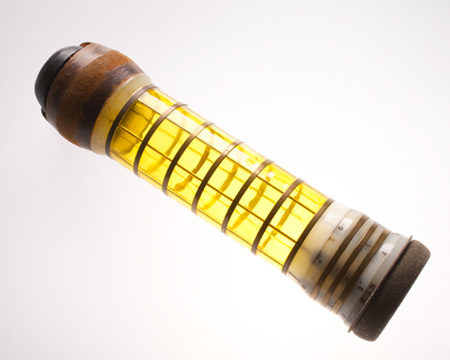CIA Museum Communication Gadgets & Devices
Dead Drop SpikeA Dead Drop is a fairly obvious way of passing messages between two people that cannot or do not want to meet publicly. A pre-arranged location and time would be agreed and a message, documents, money etc., would be delivered to that point. It could be behind a loose brick in a building or a secret location in a hollowed out tree. Dead Drop Spikes became most common during the Cold War period, as agents would deliver information in rust and mildew proof canisters.
|
Microdot CameraThis device may only be 1.6cm x 2.8cm in size, but it was a very important piece of kit during the Cold War period. Microdots are images or text reduced in size to around the size of a period or full stop. French photographer Rene Dagron used a photographic system as early as 1870 to reduce information for use by carrier pigeon. The Microdot Camera featured a microscope style lens to enable the reader to magnify the microdot.
|
Pneumatic TubeCan you imagine travelling the country to get the best ingredients to bake a cake and then visiting the grocery store next door to your house and seeing a ready mix packet of the same ingredients? Well, that is what the computer has done to this particularly impressive device. To aid communication and messaging in the 1950s, more than thirty miles of four inch tubing was installed from the CIA Headquarters in McLean, Virginia to Manassas, Virginia. The system featured vacuum driven carriers that progressed at thirty feet per second through the network of tubes. Over a million communications a year were sent using these Pneumatic Tubes. The system lasted thirty years until computers took over in the late 1980s.
|




